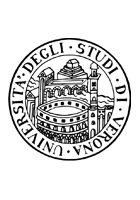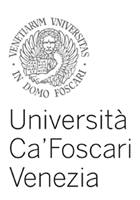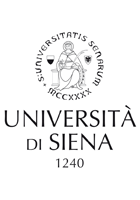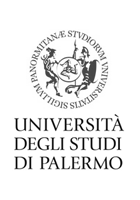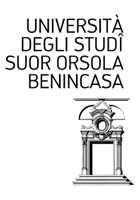De itineribus
Of the many aspects of the journey in medieval times, two very important ones are represented here: the pilgrimage to the holy sites, that was practiced from the early centuries after Christ and of which we have numerous reports, and the evangelical mission that, since the thirteenth century, represented a fundamental opportunity for Westerners to get in touch with far and different or unusual habits, to extend their mental and cultural horizons peacefully and not aggressively.
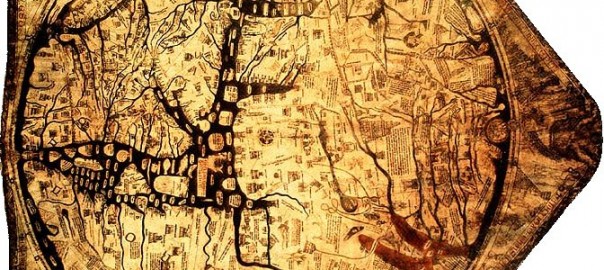
Of the many aspects of the journey in medieval times, two very important ones are represented here: the pilgrimage to the holy sites, that was practiced from the early centuries after Christ and of which we have numerous reports, and the evangelical mission that, since the thirteenth century, represented a fundamental opportunity for Westerners to get in touch with far and different or unusual habits, to extend their mental and cultural horizons peacefully and not aggressively.
The pilgrimage to the holy places, as we know, was always encouraged by the Church. The biblical Christian image of man as a pilgrim on earth clearly triggers the medieval centrality of this experience, transposed differently in books depending on the periods and authors; it can be more impressionistic and shared, as in Egeria, or more literary and descriptive, as in Liber peregrinationis by Giacomo di Verona, an Augustinian friar who may perhaps be identified with the lector who lived at the convent of St. Eufemio in Verona during the fourteenth century.
The dates of his trip to the Holy Land are quite certain because Giacomo wrote the text – at least its first part – in diary form, marking narratives with precise chronological references: set off May 7, 1335, he sailed from Venice on the 30th of that month, and he arrived in Jerusalem on August 5. Especially in the second part of the text, however, the contribution of literary sources bounding the live narration becomes more massive (particularly from Burchard of Mount Sion, a Dominican who lived at the end of the thirteenth century and who wrote the famous Descriptio Terrae Sanctae).
A different example can be sought in Petrarch’s Itinerarium, an intellectually literary pilgrimage; in fact, Petrach wrote the text to emotionally – and not physically – accompany his friend Mandelli, who was leaving for the Holy Land.
From the start, which the poet imagines from Genoa, instead of the more customary Venezia, we understand that the author’s main concern is to convey an accurate picture of the Italian peninsula, described in its geographical and historical reality. So the poet crosses through a familiar landscape, shifting the geographical center of gravity of the text from Palestine to the Tyrrhenian coast, which is described in detail with memories, literary quotations, erudite digressions. Finally, only the last five chapters focus on the original theme of the text (the Holy Places).
The other four authors of odeporic collections are Giovanni di Pian del Carpine, Giovanni de’ Marignolli, Riccoldo from Monte di Croce and Odorico from Pordenone – all with a good cultural education; their works belong to the genre of missionary experiences in the East.
John of Plano Carpini, a leading figure of the Franciscan order, was sent on a diplomatic mission by Pope Innocent IV; he set off on Easter Sunday 1245, travelled for 10,000 kilometers and reached the imperial court on July 22, in time to witness, August 24, 1246, the coronation of Cuyuccan, to whom the embassy was addressed.
The trip report is titled Historia Mongolorum, a very fascinating text that it is both itinerarium, diary, ethnographic narration and autobiography.
Riccoldo from Monte Croce was a Dominican friar, also known for his controversialist activities, who around 1280 was sent to the East by Honorius IV: he visited Palestine, Armenia, Turkey and Persia.
The evangelization of China enjoyed a moment of expansion with the foundation of an archbishopric headed by Giovanni of Montecorvino (died 1328); in the same period also John de’ Marignolli and Odorico went to China.
Odorico set sail from Venice in 1314, and arrived in China in 1322. He arrives in Canton and stays in Khambaliq (today’s Beijing) for three years; he then devoted himself – albeit without much success – to the conversion of the Nestorians of the inland areas of China.
The huge manuscript tradition of his travel reports testifies to the good fortune of the text, also the subject of numerous vernacular translations.
A few years later is the shipping of Giovanni de’ Marignolli: the new Mongol ruler banned all religions with the exception of Islam, and John was sent by Benedict XII to Beijing to act as a mediator.
Despite their diversity, these works share the ethnographic attitude and the descriptive ability of their authors. They are often free from the prejudice of making comparison, and opened to diversity with a genuine anthropological curiosity. This attitude makes them valuable evidence on the historical, as well as on the literary and linguistic levels. In the same years, many objects and uses described in those books reach the Western markets and cities through the silk route.
